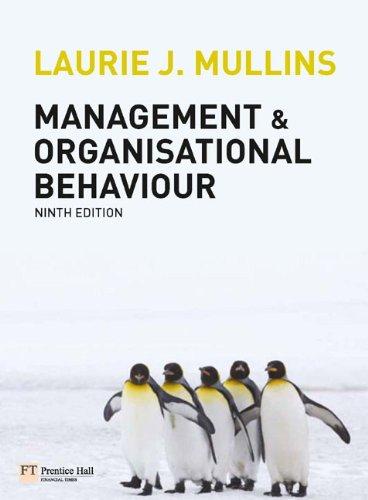Moaning is not a management task, Rupert Stadler, chief executive of the German carmaker Audi, told this
Question:
‘Moaning is not a management task,’ Rupert Stadler, chief executive of the German carmaker Audi, told this newspaper this month. ‘We can all join in the moaning, or we can make a virtue out of the plight. I am rather doing the latter.’ Mr Stadler is choosing to accentuate the positive. After all, who wants to be led by a pessimist? Jeffrey Immelt, chief executive of General Electric, keeps his darker thoughts to himself while maintaining a public breeziness. As he told the Harvard Business School conference last October: ‘You can’t sit there in front of over 300,000 people and say: “I don’t know what to do!” You have to say: “We’re gonna nail this one, and here’s why!”’
Leaders have to be resilient. At the moment the bad news is coming not in single spies, but in battalions. Tough trading conditions test character as much as business acumen. Your physical and emotional response to these challenges is just as important as the decisions you actually take, because employees are more sensitive to mood than leaders often realise. And moods are contagious. Research carried out at New York University and the University of Michigan found that in 70 different teams, people working together in meetings ended up sharing moods – whether good or bad – within two hours. And bad moods spread faster than good ones. In their 2001 Harvard Business Review article ‘Primal Leadership’, Daniel Goleman, Richard Boyatzis and Annie McKie argued that one of the key duties of leadership is to manage your emotions with care. ‘Moods that start at the top tend to move the fastest because everyone watches the boss,’ they wrote. ‘They take their emotional cues from him. Even when the boss isn’t highly visible his attitude affects the mood of his direct reports, and a domino effect ripples throughout the company.’
Leaders risk reverting to earlier, less skilful versions of themselves under pressure. They can slip into a default mode of frantic busyness, which to colleagues may look a lot like panic. They can find themselves instinctively adopting a crude command and control management style, even though they know this might not be the best way to deal with an intelligent, questioning (but anxious) workforce. Instead leaders should be trying to create a greater sense of safety. There are four things they can do to achieve this.
■ First, they must take prompt and considered action in the face of any crisis.
■ Second, leaders need to communicate honestly and consistently.
■ Third, leaders have to make an emotional connection with the workforce. This is not a time to be remote or aloof. That will only add to the sense of uncertainty.
■ Lastly, leaders need to inspire. A ‘call to arms’ can work if it follows on from the sort of confidenceboosting measures described above. But it will fall flat if the leader has failed to make a strong connection with his colleagues, and they are too fearful to be able to buy into it.
So yes, the way leaders behave matters. Temperament and character can help stop a bad situation from getting worse. But markets are tough, and recovery seems a long way off. Mr Stadler is going to need all his optimism.
Discussion questions
1. What does this article tell us about the qualities or traits needed to be a good leader?
2. Analyse the article using Hersey and Blanchard’s situational leadership model. Which of the four ‘situations’ is described? What skills would you add to those suggested in the article to enable managers to lead effectively in these circumstances?
Step by Step Answer:

Management And Organisational Behaviour
ISBN: 9780273728610
9th Edition
Authors: Laurie J. Mullins, Gill Christy





